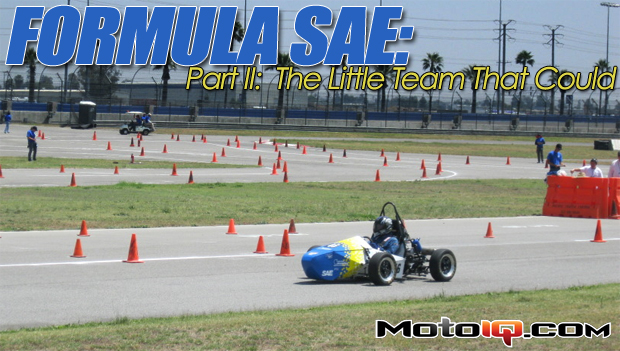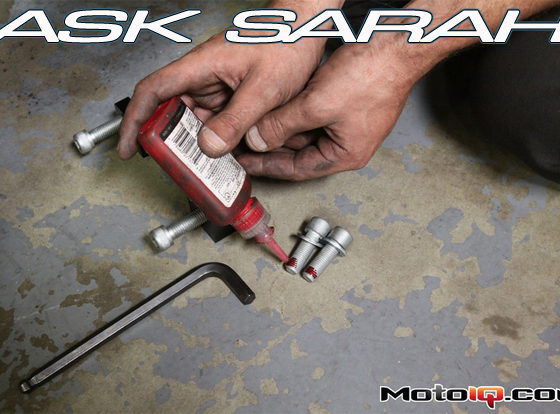
Formula SAE: Part 2, The Little Team That Could
By David Zipf
Last time we took you through the hand built chassis and suspension of the 2011 University of Delaware Formula SAE car. Formula SAE is a collegiate competition for engineers where schools design and build race cars and then try to “sell” their design to a mock spec series. The cars are raced, but they are also picked apart by industry engineers and promoted to industry investors.
In Part 2, we will look at the engine UD picked for their car, the drivetrain and tell you how the team fared at the 2011 SAE West Competition in Fontana, CA.
 |
The powerplant for UD’s car is a Yamaha YFZ450 quad engine. This little engine is light (around 70 pounds), produces lots of torque, and is very reliable. Plus, the compact packaging allows a small and light car to be built around it. |
At the heart of the car is a Yamaha YFZ450 quad engine. FSAE rules limit displacement to 600cc. The idea is to keep costs low and safety high. At competition, the students do the driving. Many engineers are not very good drivers, so this is a wise move indeed! UD’s engine has been bored to 520cc with an Ice Cube big bore kit. The head is stock, but the five-valve head with titanium and magnesium parts produces plenty of flow. Rules also force each car to have a 20mm intake restrictor, so head work is generally lots of work for little gain. Restricted, the engine makes about 40 hp and 40 lb-ft of torque. The torque curve is mostly flat, so power is strong and smooth.
 |
This is the Hall sensor from the inside of the case, next to the magneto: simple, but effective. Not seen is the toothed wheel on the magneto itself that is read by the sensor. |
When this YFZ engine was purchased, Yamaha only sold these engines in carbureted configuration. To make tuning easier, UD designed an EFI system for the car. Since it’s a single cylinder engine, this was not overly difficult, but there were a few tripping points. A custom intake was necessary anyway, so adding a fuel injector was not difficult. But adding the sensors necessary for EFI to work was. The team tried a few methods of measuring crank position. Measuring a cam wheel resulted in the loss of two Hall effect sensors.
The team eventually machined a special toothed timing wheel and welded it to the end of the YFZ’s crankshaft. The sensor could pick up a clear signal and be safe from the spinning wheel. Next, an intake temperature sensor was installed in the intake. This is all wired into a DTA S60 ECU. A wideband oxygen sensor is used for engine tuning, but for racing, the car runs in closed loop.
 |
And now for the bad news: that ¼” groove you see? It shouldn’t be there. A clutch retaining bolt backed out while the car was on the dyno and sent thousands of metal shavings through the motor. This engine was toast! The bits of other dirt and debris were not ingested by the engine; they are simply what happens when you work on an engine in a dirty environment. |



